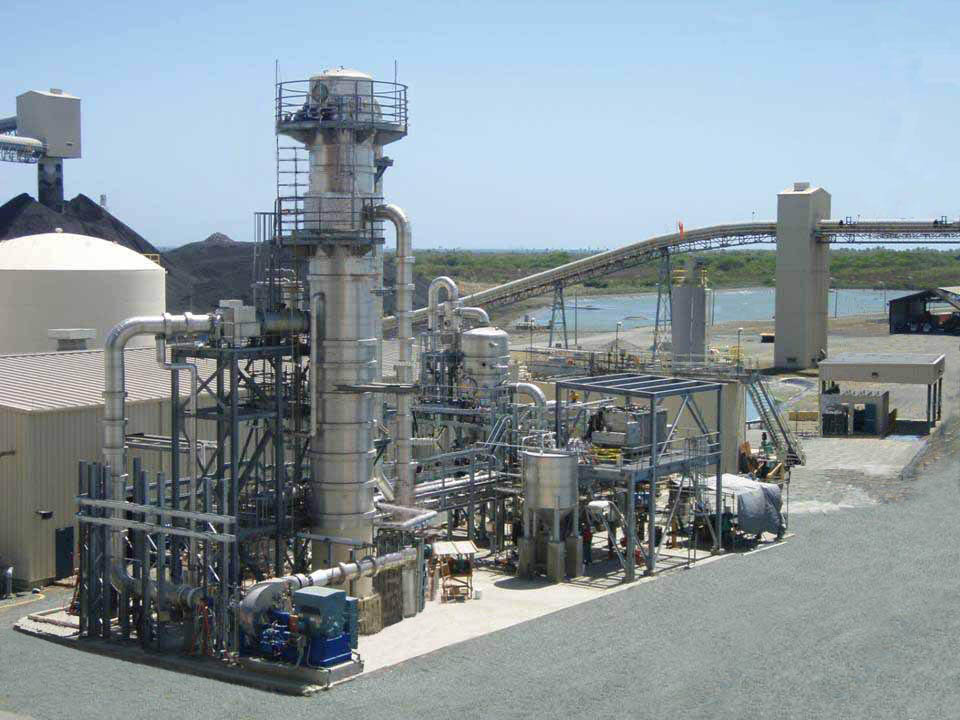ZERO LIQUID DISCHARGE PLANT (ZLD)
Zero-liquid discharge (ZLD) is a water treatment process in which all wastewater is purified and recycled; therefore, leaving zero discharge at the end of the treatment cycle.

ABOUT Zero Liquid Discharge Plant (ZLD)
ZLD stands for Zero Liquid Discharge Plant. It is an advanced wastewater treatment process designed to eliminate the discharge of liquid waste from an industrial or municipal facility.
The goal of ZLD is to minimize environmental impact by reducing or eliminating the release of wastewater into water bodies or the environment.
Goal of ZLD:
In a ZLD system, the goal is to recover and reuse as much water as possible, while minimizing the amount of waste that needs to be disposed of.
Objective of ZLD:
The main objective of ZLD is to achieve environmental sustainability by reducing water consumption, minimizing wastewater discharge, and ensuring proper treatment of residual waste. ZLD systems are commonly used in industries such as power generation, petrochemicals, pharmaceuticals, textiles, and food and beverage processing, where large volumes of wastewater are generated and strict environmental regulations are in place.
Process Flow of ZLD:
The ZLD process typically involves multiple treatment stages to remove contaminants and pollutants from wastewater. These stages may include physical, chemical, and biological treatment methods, such as sedimentation, filtration, activated carbon adsorption, reverse osmosis, evaporation, and crystallization. Through these processes, water is purified, and solid waste, salts, and other dissolved solids are separated and collected for further treatment or disposal.
Why need ZLD?
By implementing ZLD, industries can mitigate the environmental impact of their operations, conserve water resources, and comply with stringent wastewater discharge standards. However, ZLD systems can be complex and expensive to implement, requiring advanced technologies and infrastructure to achieve effective treatment and water recovery.
Working Philosophy of ZLD:
The ZLD concept involves treating and recovering as much water as possible from the industrial processes, while concentrating the remaining waste stream into a solid or a brine. The concentrated waste is typically disposed of in an environmentally responsible manner, such as through landfilling or further treatment. ZLD systems are commonly employed in industries such as power generation, chemical manufacturing, mining, and oil refining, where significant amounts of liquid waste are generated.
The design and technology employed in ZLD systems can vary depending on the specific application and the characteristics of the wastewater. However, some common components and techniques used in ZLD systems include:
1. Pretreatment: This step involves removing large solids, oils, and other contaminants from the wastewater before further treatment.
2. Advanced Filtration: Various filtration methods, such as reverse osmosis (RO), ultrafiltration (UF), or nanofiltration (NF), are utilized to separate water from dissolved solids, ions, and other impurities. These processes enable the recovery of clean water for reuse.
3. Evaporation/Crystallization: The concentrated wastewater from the filtration step is subjected to high-temperature processes to evaporate the water content. This results in the formation of solid crystals or salts, which can be disposed of or reused.
4. Brine Treatment: If the concentrated waste stream is in the form of brine, additional treatment processes may be employed to remove specific contaminants or recover valuable resources, such as metals or salts.
5. Energy Recovery: ZLD systems often incorporate energy recovery mechanisms to optimize energy efficiency. For example, waste heat generated from industrial processes can be utilized to drive the evaporation or crystallization processes.
6. Water Reuse: ZLD systems emphasize the reuse of treated water within the industrial facility, reducing the overall demand for fresh water.
The implementation of ZLD systems can significantly reduce water consumption, minimize environmental pollution, and enhance sustainability in industrial operations. However, it’s important to note that ZLD systems can be complex, require careful design and operation, and may involve higher capital and operational costs compared to conventional wastewater treatment systems
© 2023 Bio Earth Engineering. All rights reserved.
